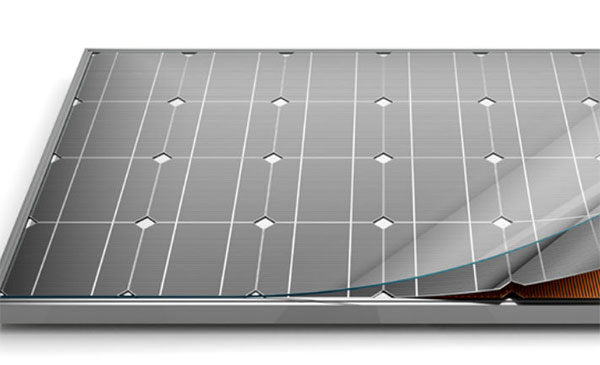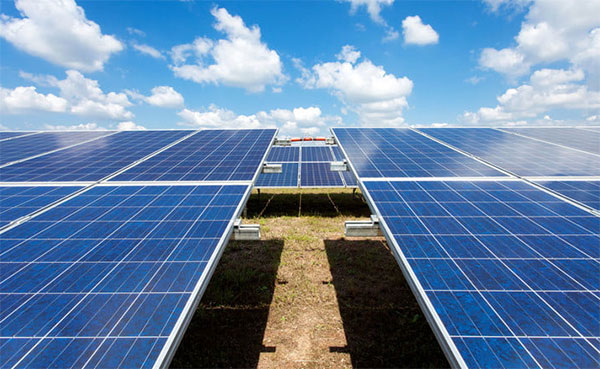Description
Yes, you can connect a solar panel directly to an inverter, but ensure their voltage and power specifications are compatible.

Basics of Solar Panel and Inverter Connection
Understanding Solar Panels
Solar panels, devices that convert sunlight into electricity, are crucial in solar power systems. Each panel consists of numerous solar cells made from materials like silicon, capable of generating direct current (DC) electricity. The efficiency of solar panels, often ranging from 15% to 20%, plays a vital role in determining the overall power output. A key aspect is their power rating, typically measured in Watts, which influences the system's total capacity.
Overview of Inverters
An inverter's primary function in a solar energy system is to convert DC electricity from solar panels into alternating current (AC), the standard electrical form used in homes and businesses. Inverters come in various sizes and specifications, tailored to handle different voltages and power levels. The quality and efficiency of an inverter can significantly affect the system's overall performance and lifespan.
Compatibility between Solar Panels and Inverters
Ensuring compatibility between solar panels and inverters is essential for a functional solar energy system. Mismatched voltage or power ratings can lead to reduced efficiency or even damage to the components. For instance, an inverter with a lower power capacity than the solar panel array can result in wasted energy potential.
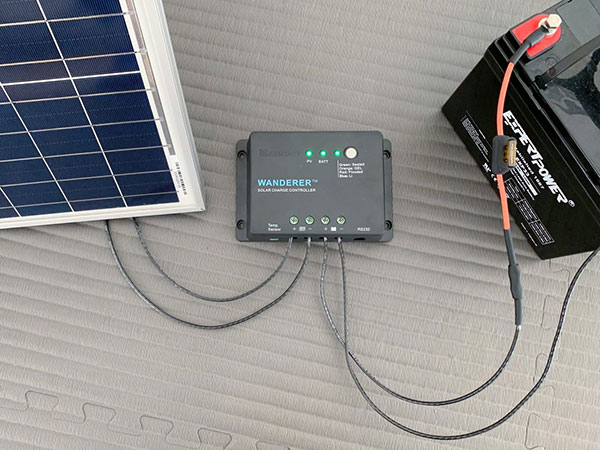
Potential Consequences of Incorrect Alternator Amperage
In cases where the alternator's amperage is not correctly matched with the vehicle's electrical needs, several issues can arise. An alternator with insufficient amperage may struggle to keep up with the vehicle's power requirements, leading to a drained battery and potentially leaving the vehicle without enough power to operate efficiently. On the other hand, an alternator with too much amperage can overcharge the battery, shortening its lifespan and possibly damaging the electrical system. Therefore, selecting an alternator with the appropriate amperage, usually determined by the vehicle's power requirements and any additional electrical accessories, is critical for vehicle performance and longevity.
Direct Connection Considerations
Feasibility of Direct Connection
Directly connecting solar panels to an inverter is technically possible, but it largely depends on the specific characteristics of both the solar panels and the inverter. The crucial factor to consider is whether the inverter can handle the direct current (DC) output from the solar panels. Solar panels typically produce DC power, and most home appliances and systems use alternating current (AC). Thus, the inverter must be capable of converting the specific DC output to AC without any intermediary device like a charge controller.
Impact on Solar Panel Performance
Connecting solar panels directly to an inverter can impact their performance. The efficiency of solar panels, which is a critical factor in their performance, may not reach its maximum potential if the inverter's input specifications don't align well with the solar panel's output. Solar panels operate at optimal performance under specific conditions, and any mismatch with the inverter can lead to reduced power output. For instance, if a solar panel has a peak power output of 300 Watts but is connected to an inverter that can only handle 250 Watts, the system will lose 50 Watts of potential energy.
Inverter Requirements for Direct Connection
For a successful direct connection, the inverter must meet certain requirements. It should have a voltage input range compatible with the solar panel's output. The inverter's power capacity also needs to match or exceed the total power output of the solar panels. For example, if the total power output of the solar panels is 1kW, the inverter should be able to handle at least 1kW. Furthermore, the inverter should have a high conversion efficiency, typically above 90%, to ensure minimal energy loss during the conversion from DC to AC.
Selecting the right inverter involves understanding the detailed specifications of both the solar panels and the inverter. It's also essential to consider the system's overall cost, which can vary significantly based on the quality and capacity of the inverter. High-quality inverters with advanced features like MPPT (Maximum Power Point Tracking) technology can optimize the power output from the solar panels but come at a higher cost.
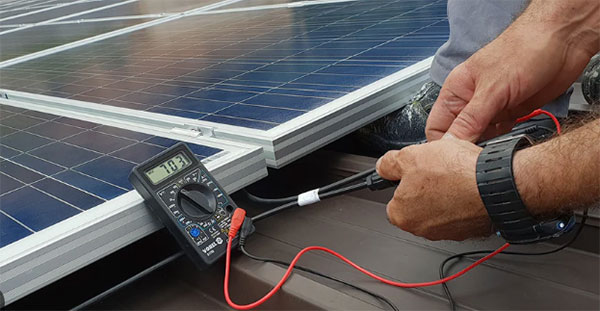
Installation Process
Step-by-Step Guide for Connecting Solar Panels to Inverter
- Check Compatibility: Ensure that the solar panel's voltage and power output match the inverter's specifications. For instance, a 24V solar panel should pair with a 24V inverter.
- Mount the Solar Panels: Securely install the solar panels in a location with maximum sun exposure. The mounting structure should be robust, capable of withstanding environmental factors.
- Connect the Solar Panels to the Inverter: Use appropriate cables to connect the solar panel's positive and negative terminals to the corresponding terminals on the inverter. The cable gauge should be sufficient to handle the current, usually between 10 AWG to 4 AWG for residential systems.
- Ground the System: Connect the solar panel frames and the inverter to a grounding point to protect against electrical surges.
- Test the Connection: Once connected, test the system under sunlight to ensure it is operating correctly and efficiently.
Tools and Materials Needed
- Solar Panels and Inverter: Choose panels and an inverter with compatible specifications.
- Mounting Equipment: Includes racks, bolts, and screws. The cost varies based on the mounting system's complexity and materials.
- Cables and Connectors: PV cables, usually copper, designed for outdoor use and UV resistance. The cost depends on length and gauge, typically ranging from $0.50 to $2 per foot.
- Tools: Basic hand tools like wrenches, screwdrivers, and a drill.
- Multimeter: For testing voltage and current, essential to ensure the system is working correctly. Prices range from $20 to $100 based on quality and features.
Safety Precautions During Installation
- Turn Off Power Sources: Before beginning the installation, ensure all power sources are off to prevent electrical hazards.
- Use Protective Gear: Wear gloves, safety glasses, and appropriate footwear to prevent injuries.
- Be Cautious with Heights: When working on roofs or elevated structures, use safety harnesses and ensure stable footing.
- Follow Electrical Codes: Adhere to local electrical codes and standards to ensure the system is safe and compliant.
- Seek Professional Help if Unsure: If any part of the installation process is unclear or beyond your skill level, consult a professional.
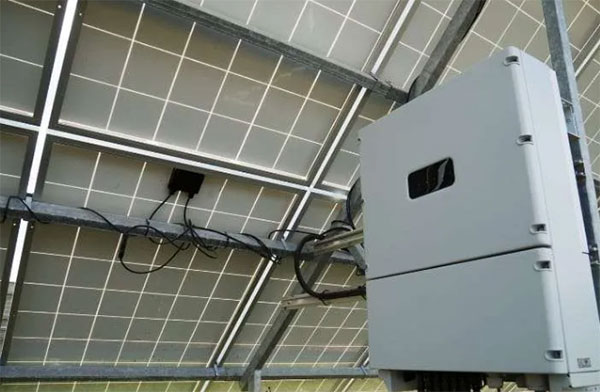
Technical Aspects of Direct Connection
Voltage and Current Considerations
Understanding the voltage and current specifications of both solar panels and inverters is crucial for a successful direct connection. Solar panels typically operate at a voltage range between 12V to 48V, and current ratings can vary based on the panel's size and type. For instance, a standard residential solar panel may produce about 5 to 10 amps of current. The inverter must match these specifications to avoid inefficiencies or damage. If the solar panel outputs 24V, the inverter should be capable of handling 24V input. Mismatched voltage can lead to underperformance or overload, impacting the system's efficiency and lifespan.
Managing Power Output
The power output of a solar panel system is a function of both the current and voltage. It's measured in Watts (W) and is a key factor in determining the size and type of inverter needed. For example, a solar panel system generating 500W will require an inverter that can handle at least 500W. Exceeding the inverter's maximum power capacity can result in reduced efficiency and potential damage to the inverter. Therefore, it's crucial to calculate the total power output of the solar panels and choose an inverter that can manage this load efficiently.
Inverter's Role in Regulating Energy
The inverter not only converts DC to AC but also plays a vital role in regulating the energy flow from the solar panels to the electrical grid or storage system. Modern inverters come with Maximum Power Point Tracking (MPPT) technology, which optimizes the power output from the solar panels. MPPT ensures the solar panels operate at their maximum power point, increasing the system's overall efficiency. Inverters with MPPT can enhance energy production by up to 30% compared to systems without it. Additionally, inverters also provide critical safety functions, such as disconnecting the solar panels in case of a fault or power surge, thereby protecting the entire system
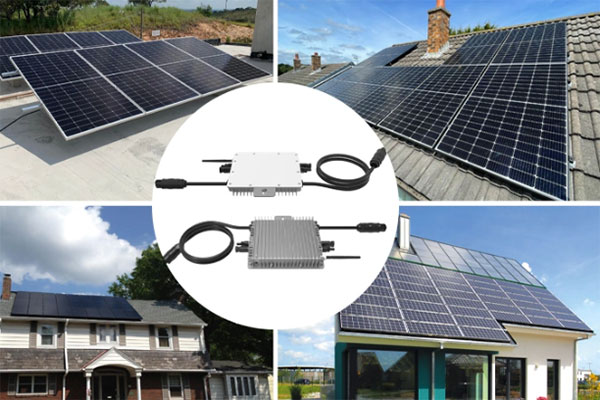
Troubleshooting and Maintenance
Common Issues in Direct Connections
Directly connecting solar panels to an inverter can lead to several issues, which are essential to identify and resolve promptly:
- Mismatched Voltage or Current: This can cause the inverter to underperform or even sustain damage.
- Inverter Overload: Occurs when the solar panels produce more power than the inverter can handle.
- Poor Wiring Connections: Loose or corroded wires can lead to reduced efficiency and potential safety hazards.
- Shading on Panels: Even partial shading can significantly reduce the solar panel's output.
- Inverter Faults: Issues like software glitches or hardware malfunction in the inverter can impede system performance.
Routine Maintenance Tips
Regular maintenance ensures the solar panel system operates at peak efficiency:
- Inspect Solar Panels: Look for any physical damage or dirt accumulation every few months.
- Check Wiring and Connections: Ensure all connections are tight and free from corrosion.
- Monitor System Performance: Regularly check the power output to ensure it aligns with expected values. Solar panels typically have a lifespan of 25-30 years, but their efficiency may decrease over time.
- Update Inverter Software: If your inverter is software-driven, keep it updated with the latest firmware.
Long-Term Care for Solar Panels and Inverter
Ensuring the longevity of your solar panels and inverter involves several long-term strategies:
- Preventative Maintenance: Schedule annual professional inspections to identify and resolve issues before they escalate.
- Keep Panels Clean: Regular cleaning of solar panels can prevent efficiency losses due to dirt and debris. Efficiency loss due to unclean panels can be up to 20%.
- Environment Considerations: In areas with harsh weather, additional protective measures for the panels and inverter might be necessary.
- Inverter Replacement: Inverters typically have a shorter lifespan than solar panels, around 10-15 years. Plan for potential replacement or upgrades as needed.

Alternatives to Direct Connection
Using Charge Controllers
In many solar power systems, especially those involving battery storage, charge controllers play a crucial role. These devices regulate the voltage and current coming from the solar panels to the batteries, ensuring safe and efficient charging.
- MPPT vs. PWM: Maximum Power Point Tracking (MPPT) charge controllers optimize the power extraction from solar panels, whereas Pulse Width Modulation (PWM) controllers are simpler and more cost-effective but less efficient. MPPT controllers can improve efficiency by up to 30% compared to PWM controllers.
- Voltage and Current Regulation: Charge controllers prevent overcharging and deep discharging of batteries, critical for maintaining battery health. Overcharging a battery can reduce its lifespan by half or more.
- System Scalability: With a charge controller, adding more panels or upgrading the system becomes easier, offering flexibility for future expansion.
Advantages of Indirect Connections
Indirect connections, where solar panels connect to an inverter via a charge controller or battery, offer several benefits:
Battery Storage: This setup allows for energy storage, providing power during times when solar panels aren’t producing, like at night or during cloudy days.
System Protection: Charge controllers offer additional layers of protection against overvoltage, which can be crucial in areas with fluctuating sunlight.
Improved Energy Management: With batteries in the system, it's easier to manage and utilize the energy produced, enhancing the overall efficiency and utility of the solar power system.
Selecting the Right Setup for Your Needs
Choosing between a direct or indirect solar panel connection depends on several factors:
Power Requirements: For systems with high power demands or needing uninterrupted power supply, incorporating batteries and charge controllers is beneficial.
Budget Considerations: Direct connections are generally more cost-effective upfront but may offer less flexibility and efficiency. The cost of a basic solar power setup can range from $1,000 to $5,000, depending on the scale and components used.
Installation Space: Indirect connections with batteries require more space, a critical consideration in limited areas.
Maintenance and Lifespan: Systems with charge controllers and batteries may require more maintenance but can offer a more balanced power output over time.








